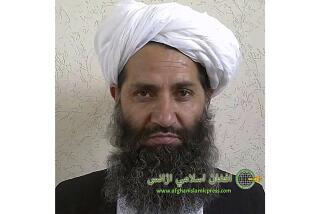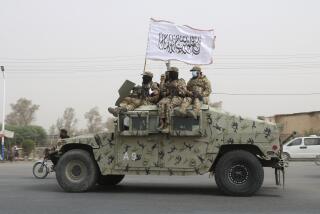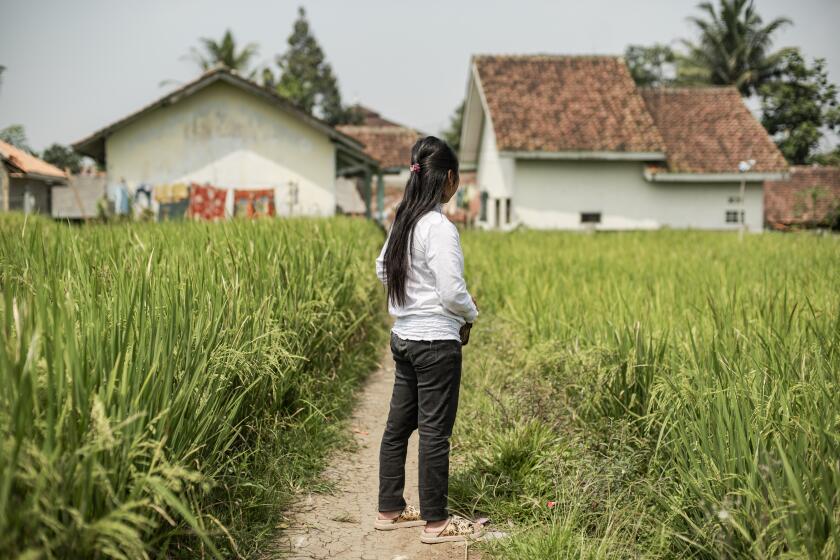The first Friday prayers since Taliban takeover: Ice cream for a teenage fighter, a preacherâs M-4 rifle
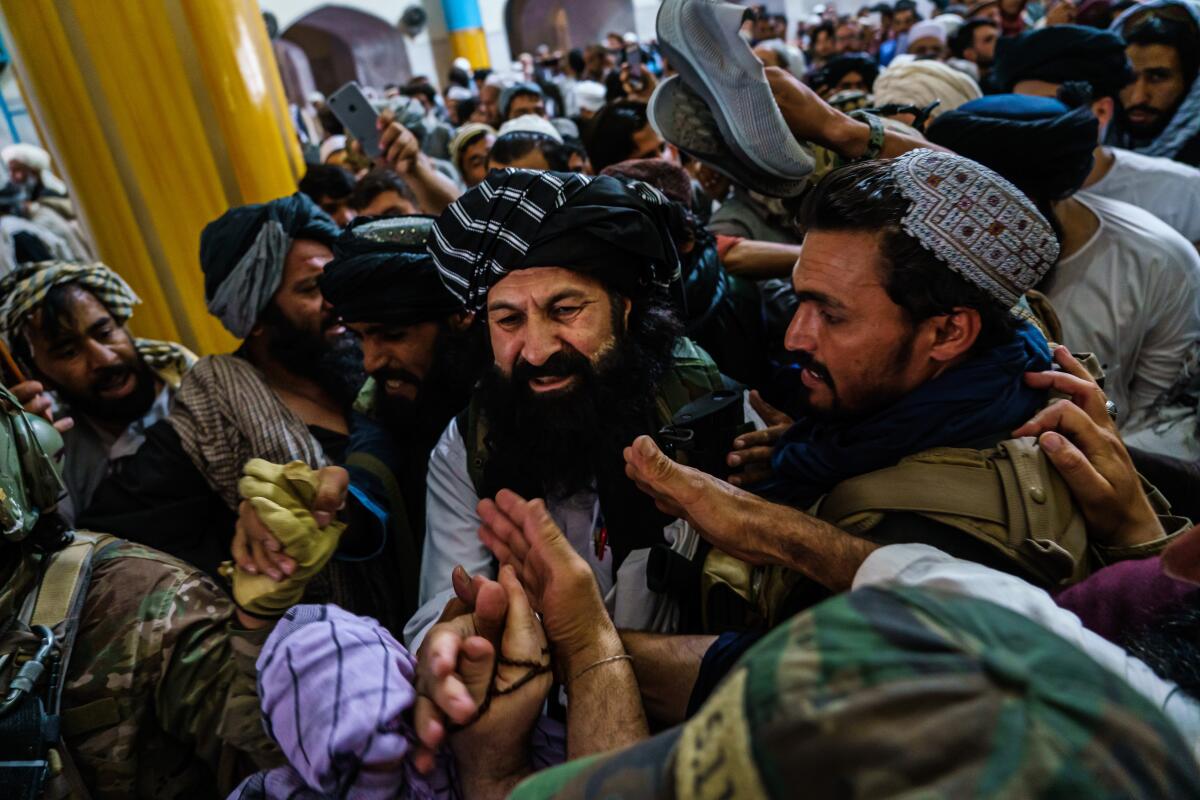
KABUL, Afghanistan â Friday prayer days are the inflection point of the Muslim week, and this was the first of them in the newly Taliban-conquered Kabul. In one landmark mosque, a hush fell over the congregation as the preacher revealed himself.
It was Khalil Rahman Haqqani, a senior member of the Haqqani network, a Taliban splinter group considered a terrorist organization by the United States â and one of the fiercest foes that American forces spent two decades trying to vanquish.
Flanked by armed guards, Haqqani cradled a rifle: an American-made M-4 carbine. From the pulpit, he delivered a message that was by turns reassuring and menacing: Life under the Taliban would be different than under the deposed national rulers he derided as weak and corrupt.
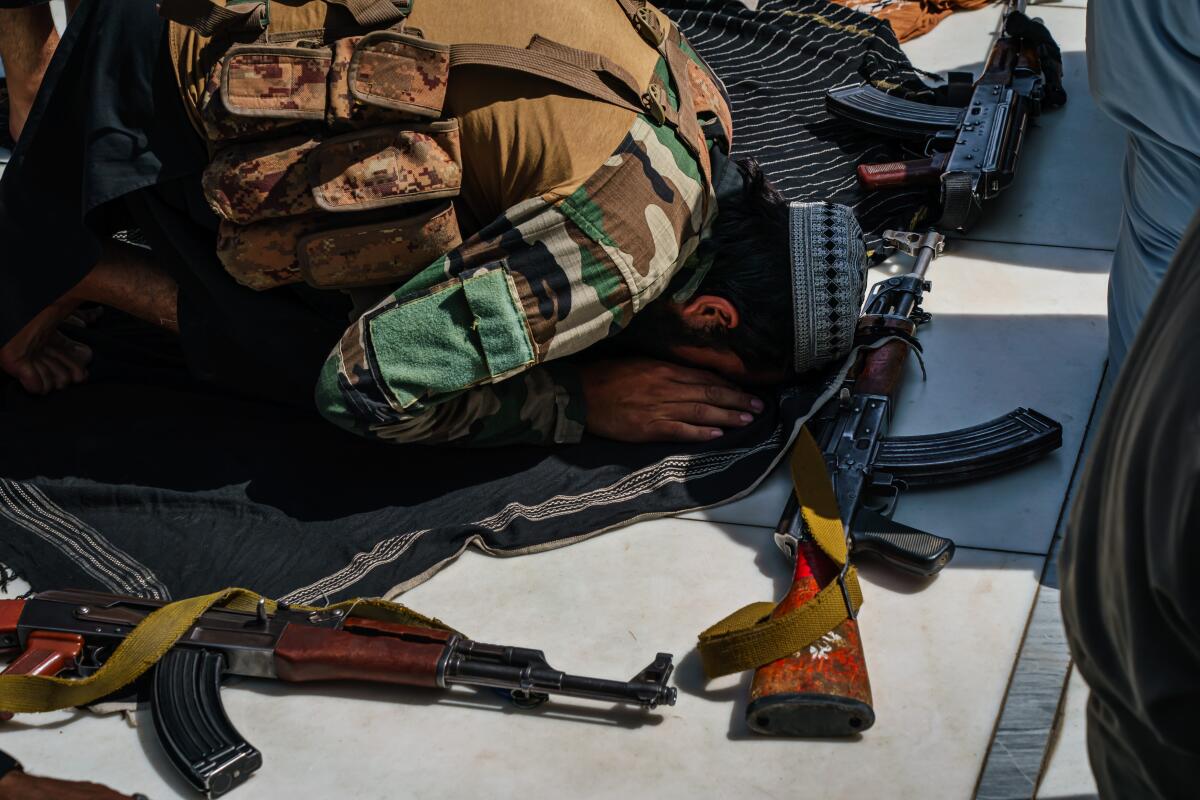
âWe have freed Afghanistan from Western imperialism and the infidels. Afghanistan will now be a peaceful and prosperous country, where there will be security, no corruption, and no theft,â he said. All of the countryâs various ethnicities and factions, he added, were âbrothers.â
Across the capital, bewildering dissonance played out at every turn: Everyday life transpired as always, but inside the picture frame of a much-altered reality. Fruit vendors hawked their wares. A money-changer counted his currency. A young Taliban fighter â a teenager, by the looks of him â slurped an ice cream, his Kalashnikov rifle slung from his shoulder.
Perhaps in deference to the austere sensibilities of the new rulers, people in the central neighborhood of Shahr-e-Naw â home to hotels, banks, supermarkets â seemed to be double-parking less than usual.
And almost certainly in line with the new rulersâ inclinations, women were rarely spotted alone on Kabul streets, even though as yet, in the capital at least, there has been no formal injunction that they cannot venture out without a male companion.
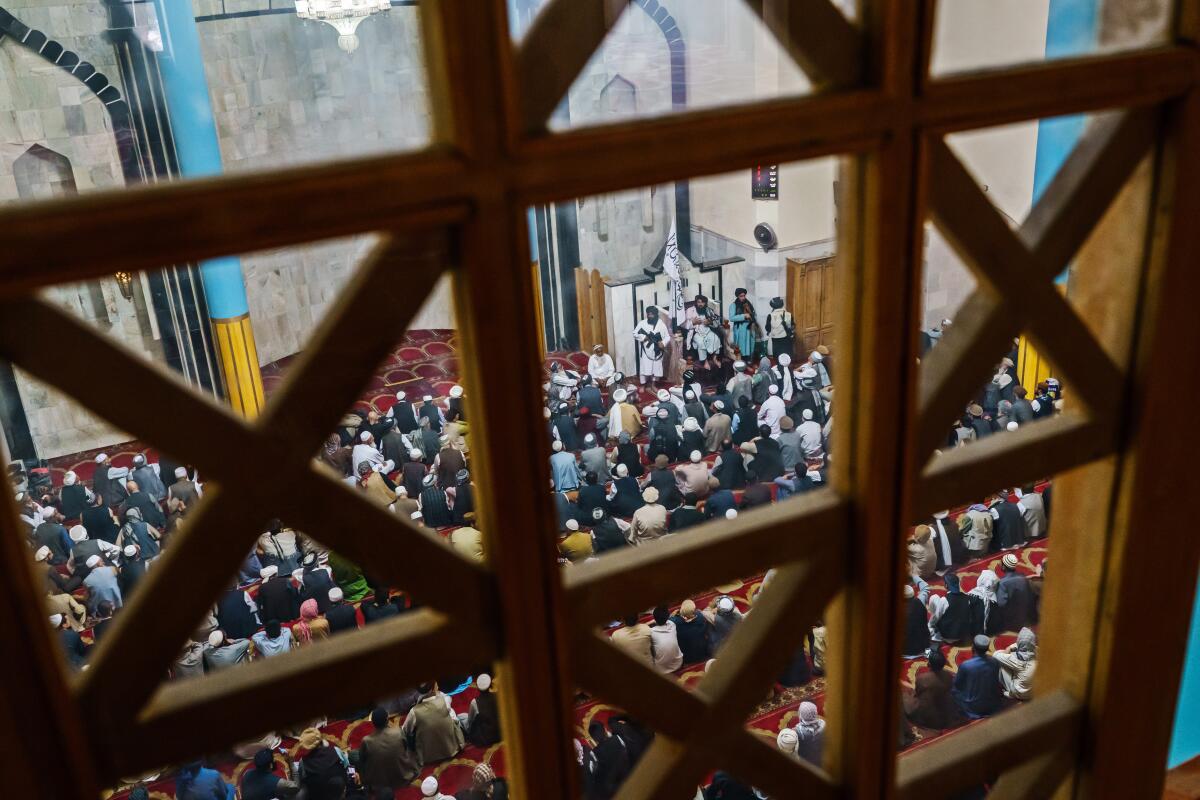
That restriction on women â guardianship in public, by even a small boy â was a staple of the Talibanâs previous five-year rule, which ended nearly 20 years ago. The requirement for a male guardian was one of many indignities of womenâs lives under the militant groupâs rule, along with being banned from school and working outside the home.
In smaller towns and villages, it is already the norm again.
On this Friday in Kabul, some downtown establishments were shuttered, even on what is normally a busy shopping day. At one, an appliance store called M-Z, one can buy things like vacuum cleaners and toaster ovens and blenders, all having become commonplace household items since the Taliban were last in charge.
A top-floor restaurant called Aroma was open but empty, its signage glowing against the twilight.
Now, as before, Friday is the dedicated day of worship. About a thousand men, with an overflow in the courtyard, turned out for prayers at the blue-domed Pul-i-Khishti Mosque, Kabulâs largest.
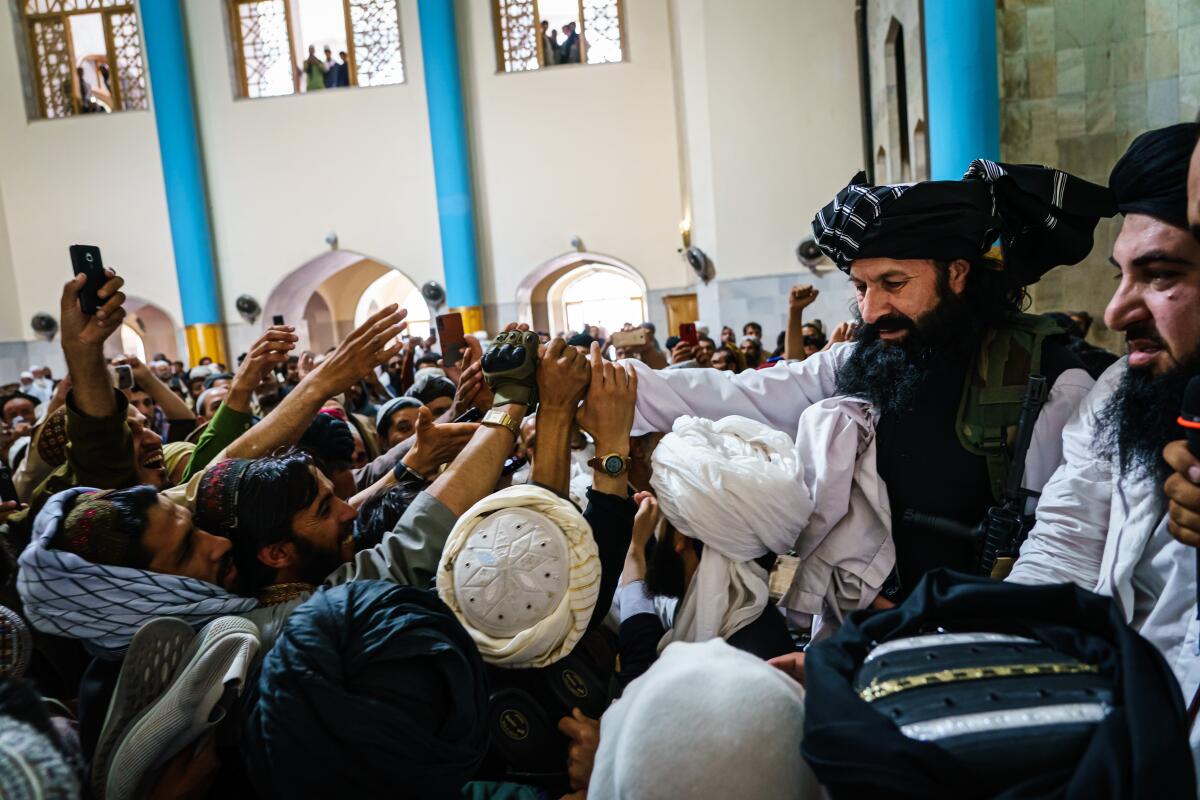
At every gate, armed security frisked arriving worshipers. But guards did not appear to be enforcing a strict dress code, and not everyone was in traditional dress.
Women were all but invisible. One, in an all-enveloping burqa, huddled behind some bushes nearby as the men gathered.
In advance of prayer day, the Taliban had handed down guidance to imams, or clerics, all across the country: They should use their weekly sermons to call for unity. They should urge their congregants not to try to flee, like the throngs surrounding Kabulâs airport, the last American redoubt, in hopes of catching a flight out. And they should be wary of anyone spreading ânegative propagandaâ against the new rulers.
It was a message that echoed from mosque pulpits all over Afghanistan, but in this historic house of worship, with a white Taliban flag as backdrop, Haqqani â considered by many listeners to be insurgent royalty â stayed firmly on message.
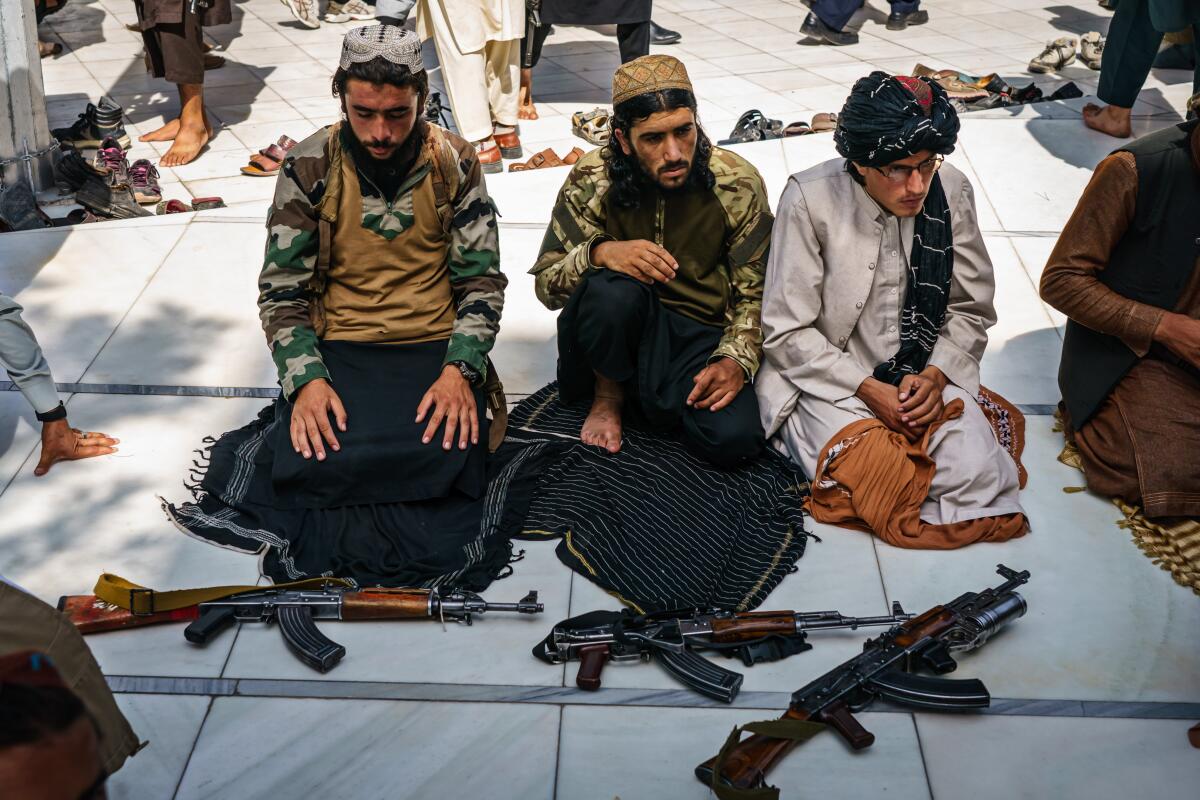
The Taliban has yet to formally assume governing power, and Haqqani is playing a significant role in that process. The network that bears his family name is known for urban terrorist strikes that exacted mass casualties, as well as kidnappings and a sophisticated finance network.
His appearance was marked by trappings not only of wartime power, but of victory over a despised foreign foe. His security detail was dressed like elite commandos, clad head to toe in what appeared to be captured American-made gear, including helmets and even night-vision goggles.
After prayers finished, Haqqani was mobbed like a rock star â or a conquering hero.
Already, the new order was taking hold. At a quiet intersection outside the central downtown area, two skinny boys stood in the middle of the street hawking oversized white Taliban flags.
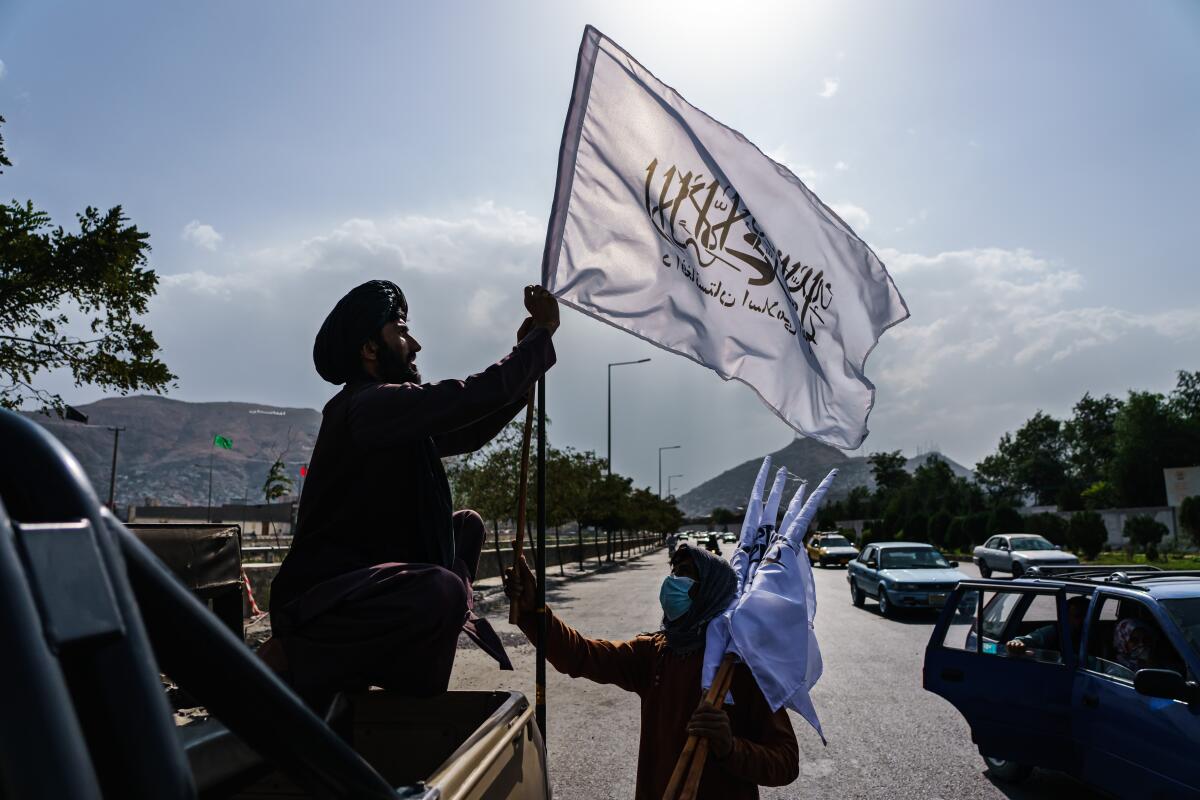
A khaki-colored military vehicle drove up, carrying an eminence: Mullah Esmatullah Khadir, 30, from Musa Qala district in Helmand province.
He signaled to the boys that he wanted a flag, and one leaped excitedly to comply. The mullah, his feet in shiny leather loafers, hopped out of the vehicle, climbed onto the cargo bed and affixed the flag to the antenna.
Then he grinned.
Times staff writer Laura King in Washington contributed to this report.
More to Read
Sign up for Essential California
The most important California stories and recommendations in your inbox every morning.
You may occasionally receive promotional content from the Los Angeles Times.

